Do you love zucchini but don’t have enough space in your garden to grow them? Do you want to enjoy fresh and organic zucchini without spending too much money and time? If you answered yes to any of these questions, then you might want to try growing zucchini in pots.
Growing zucchini in pots is a great way to save space, control pests and diseases, and harvest delicious zucchini all year round. In this article, you will learn how to grow zucchini in pots, and what are the best tips and tricks to make your zucchini plants thrive.
1. Choose the Right Variety
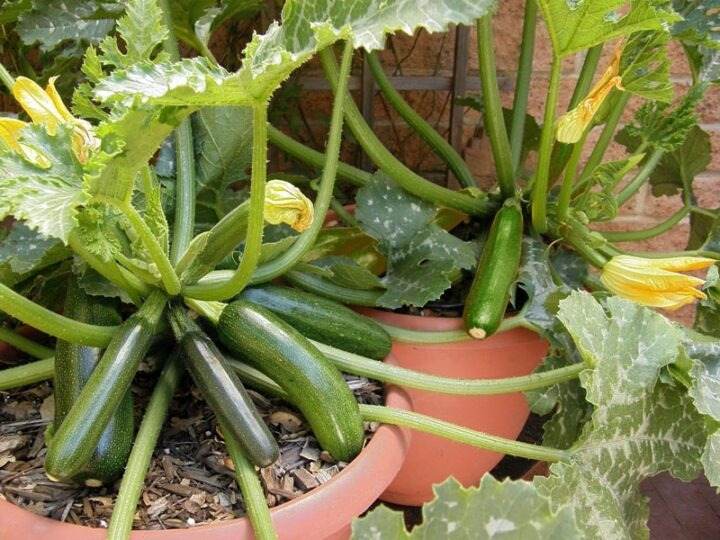
To grow zucchini in pots, opt for compact or bush zucchini varieties, as they are better suited for container gardening. Some suitable varieties include “Bush Baby,” “Spacemiser,” and “Eight Ball.” These varieties often grow to about 2 feet tall and 4 feet wide. They have a bushy habit and produce round or oval fruits that are green or yellow in color.
2. Select a Suitable Pot
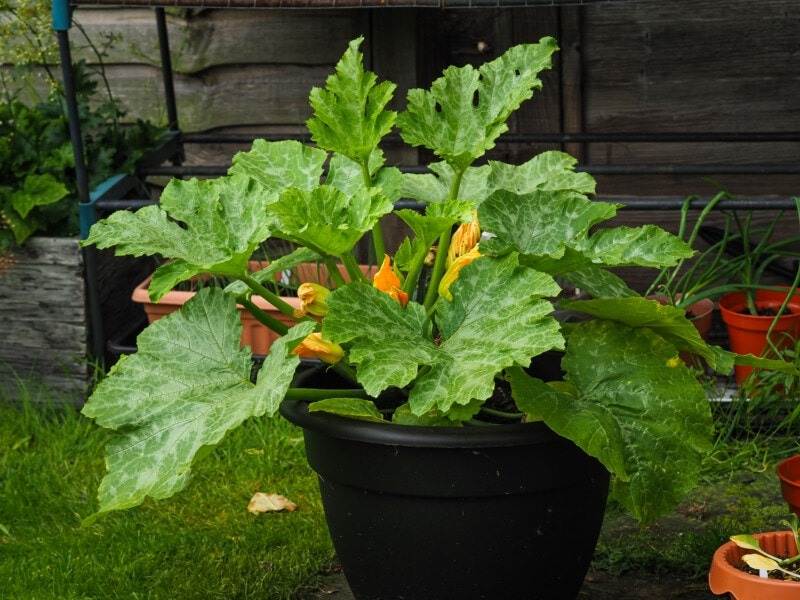
Choose a large container with a minimum size of 5 gallons (19 liters) for each zucchini plant. Ensure it has drainage holes to prevent waterlogging.
3. Potting Mix
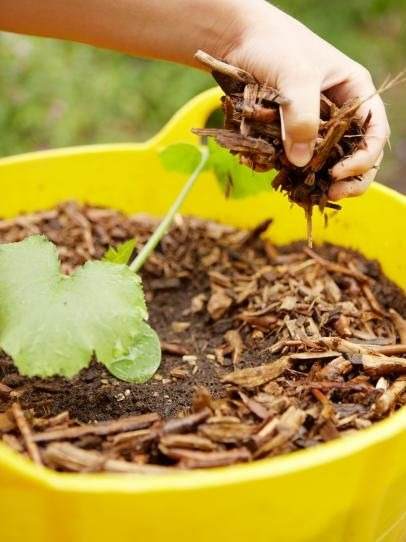
Zucchini prefers a high-quality potting mix that is well-draining and rich in organic matter. You can also add compost for extra nutrients.
4. Planting Zucchini
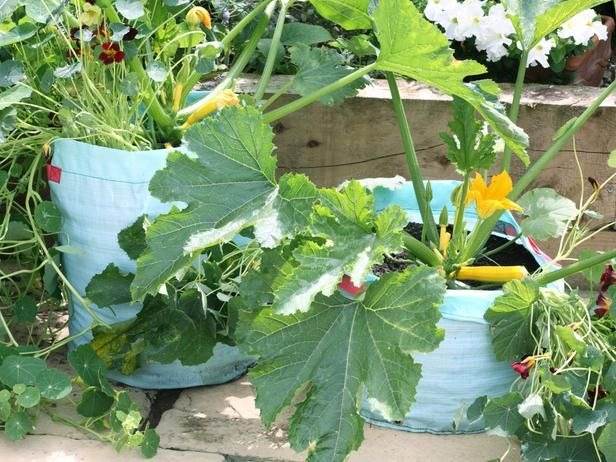
- Fill the pot with the potting mix, leaving about an inch (2.5 cm) from the rim.
- Plant zucchini seeds or seedlings in the center of the pot, following the recommended spacing on the seed packet or plant tag. Plant seeds about 1 inch deep.
5. Position and Light
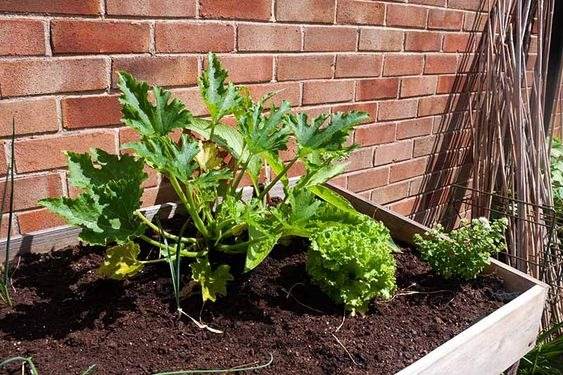
Zucchinis thrive in full sun. That’s why you should place the pot in a sunny location where it will receive at least 6-8 hours of direct sunlight daily.
6. Watering Properly
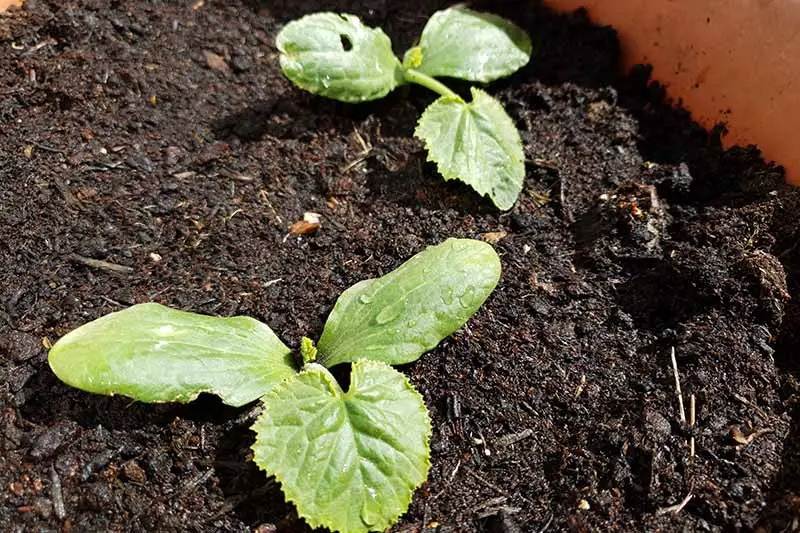
Your zucchini plants thrive with regular watering and require consistently moist soil. Avoid overwatering to prevent waterlogging and promote healthy growth. To prevent water from splashing onto the leaves (which can lead to fungal diseases), use a soaker hose or drip irrigation.
7. Fertilizing
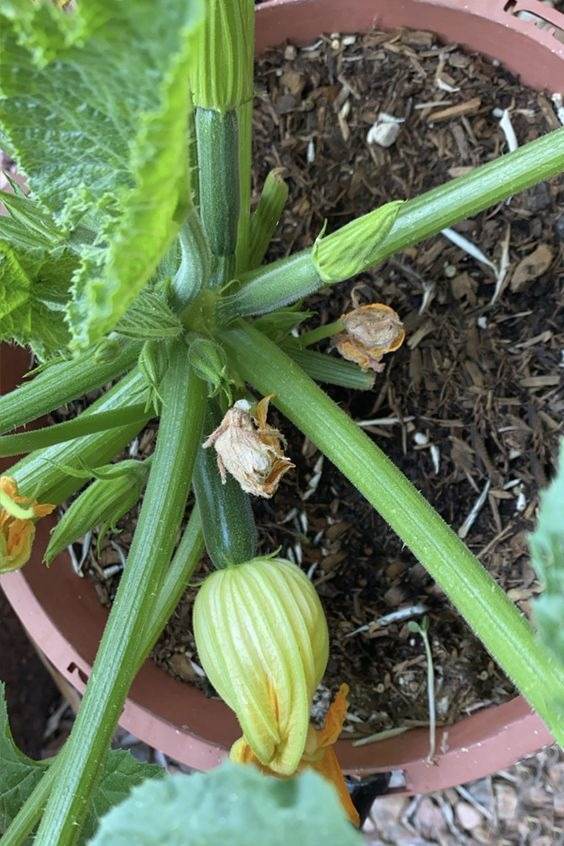
Zucchinis are heavy feeders. Start with a balanced, slow-release fertilizer when planting and follow up with regular applications of a balanced liquid fertilizer every 2-3 weeks during the growing season.
8. Support and Pruning
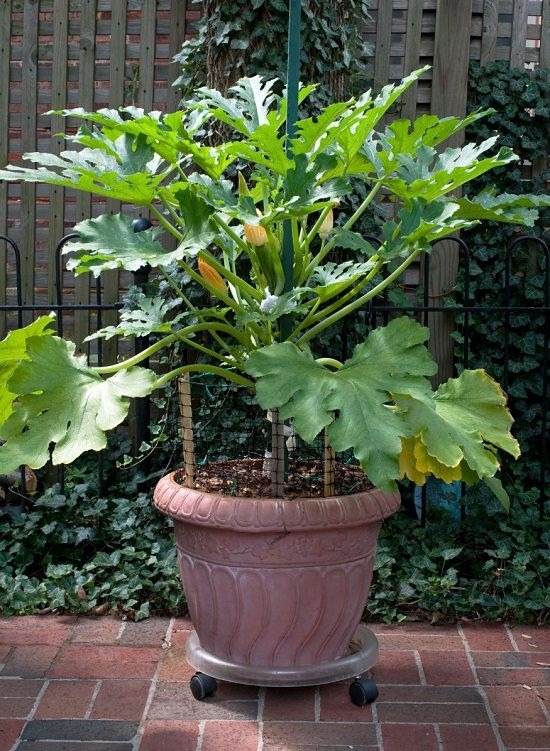
Zucchini plants can become heavy and may benefit from staking or support to prevent them from falling over. Pruning the plant is also essential to remove excessive foliage to improve air circulation and reduce the risk of disease.
9. Harvesting
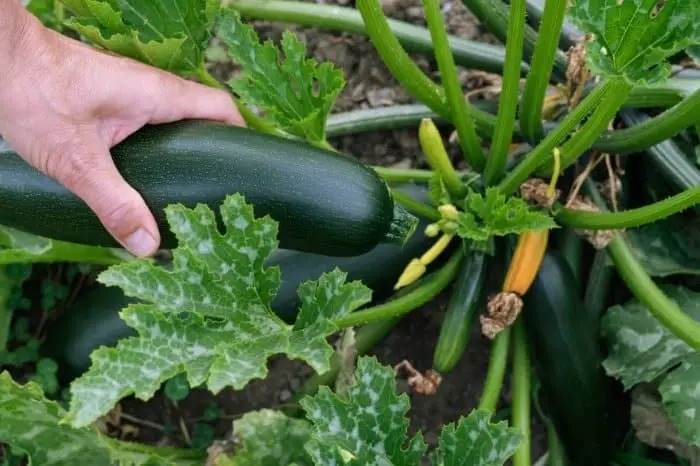
Zucchini is ready to harvest when it reaches the desired size, usually 6-8 inches (15-20 cm) in length for most varieties. Harvesting regularly is the key to encouraging continuous production. When the time comes, use a sharp knife or scissors to cut the zucchini from the plant, rather than pulling, to avoid damaging the plant.
10. Companion Planting
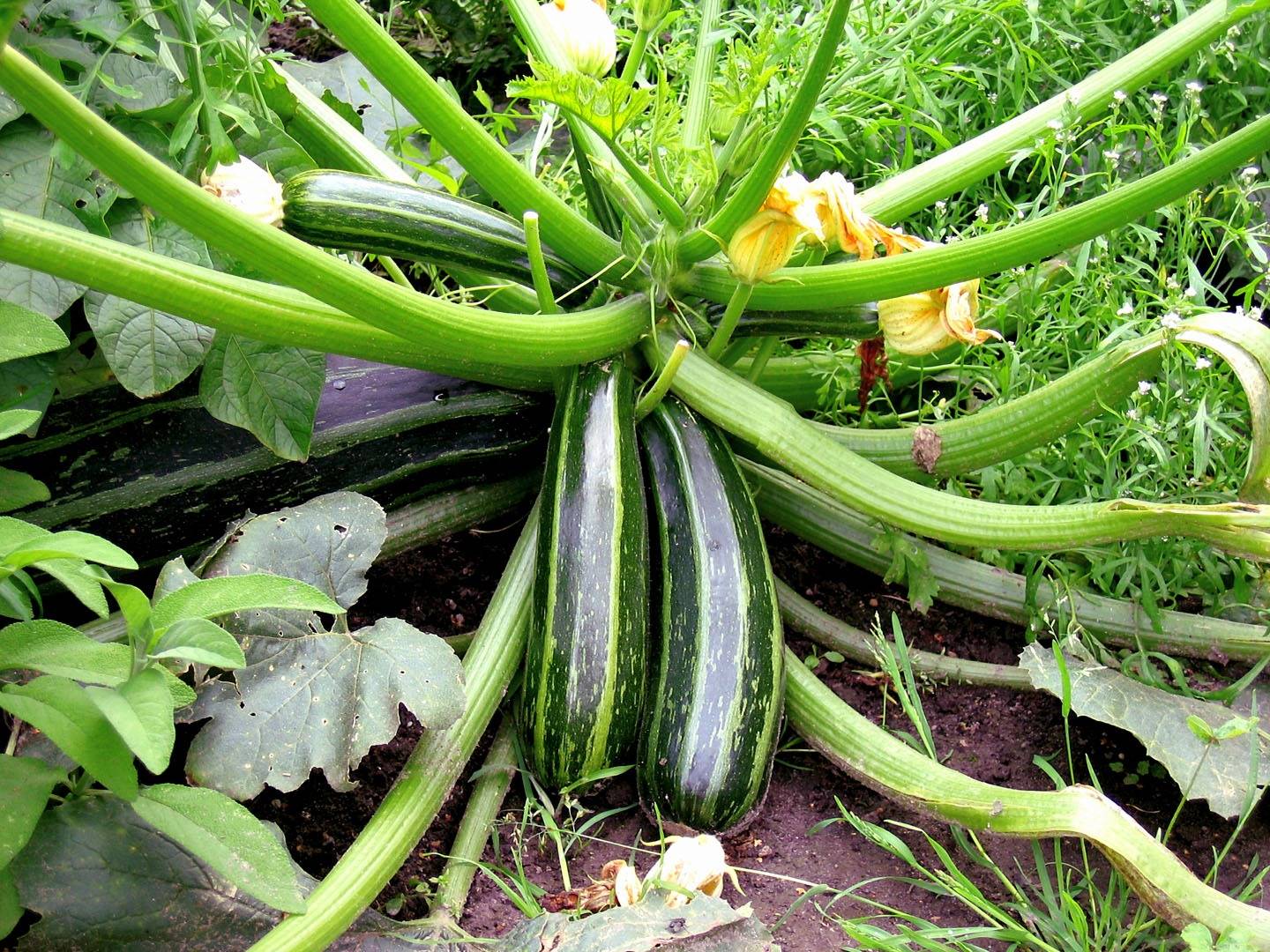
Companion planting with herbs like basil and marigolds can help deter pests and improve the flavor of zucchinis.
With proper care, zucchini plants in pots can produce an abundance of delicious, fresh vegetables. Besides, don’t forget to regularly monitor for pests and diseases and maintain optimal growing conditions to help ensure a successful zucchini harvest.
